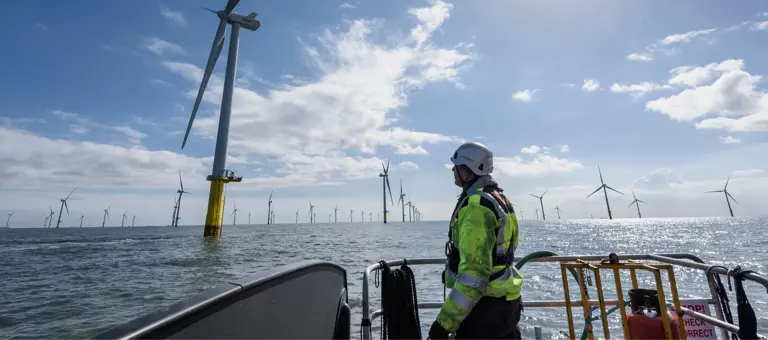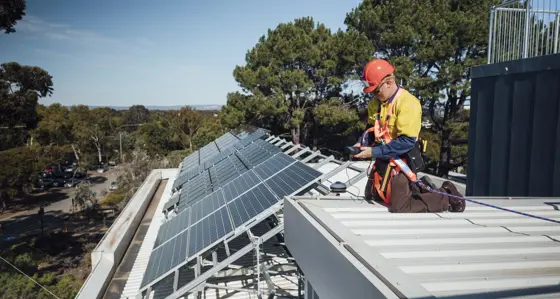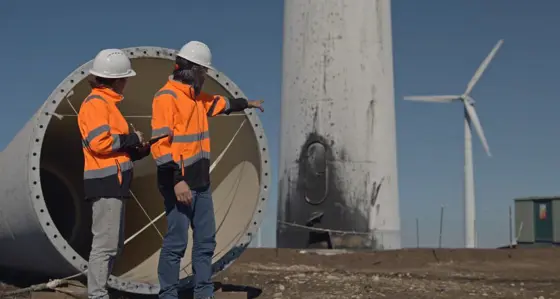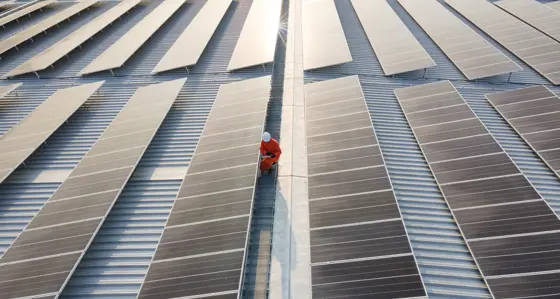
Floating offshore wind - The quest for scale
8 min read 8 February 2024
Harvesting wind in previously inaccessible seabed areas has many advantages, but there are some obstacles that need to be overcome before we can deploy floating offshore wind at scale. One of the main challenges is the lack of standardisation in emerging technologies. Additionally, significant investment in port infrastructure is required to make deployment feasible.
Fixed-bottom turbines currently dominate the global offshore wind market, but their limitations in deep water make floating alternatives attractive to scale up offshore wind deployment.
Floating wind, forecasted to reach more than 25GW by the mid 2030s, offers numerous advantages, including access to higher wind speeds further out at sea, expanded seabed areas, and reduced environmental impact during installation and operation.
Key players, such as the UK, the US and China, and numerous European countries, are making significant allocations for floating offshore wind projects. But despite the potential, the mass roll-out of floating wind turbines faces technical challenges. These include a lack of standardisation in the emerging technologies around foundation design, as well as supply chain constraints, leading to a relatively high levelised cost of energy.
Overcoming these barriers requires substantial investment, port infrastructure development and policy support. As countries race to achieve their energy transtion goals, floating offshore wind is likely to be a mix of innocation and co-operation.
Download our full report below and get in touch to find out more.
Related Insights

Did you miss out on Italy's MACSE Auction? Here is why you shouldn’t give up
Developers now face a pivotal decision. Do you learn from these tough results, refine your bid, and compete fiercely in the next MACSE auction, or, pivot to a targeted merchant strategy, capturing value where subsidies won’t reach?
Read more
Podcast - S3-E2 - Decarbonising complex industries
Navigating the challenges of decarbonisation while maintaining energy security.
Read more
Navigating the new domestic decarbonisation landscape
Baringa’s ninth Green Buildings and Transport Forum on 3 December 2025 brought together a range of market players to discuss the future of warm homes.
Read more
Getting the balance right: Australian data centre growth and the energy transition
Baringa's analysis for the Clean Energy Finance Corporation forecasts that data centres could represent up to 11% of Australia’s total electricity consumption by 2035.
Read moreRelated Client Stories

Unlocking scalable growth in the private energy sector
A leading private energy company faced a critical challenge: its legacy systems were slowing down operations, limiting scalability, and creating friction across commercial and operational teams.
Read more
Progressing Western Australia’s energy transition
With growing urgency around net-zero targets, how can practical solutions be identified to unlock faster and more effective project delivery in the Wholesale Electricity Market?
Read more
Navigating transition risk and opportunities with Equitix
Join Energy and Resources Director Jim Fitzgerald, as he talks to our client Charlotte Whittlesea from the Sustainability and ESG team at Equitix about a recent project to integrate climate risk and opportunity considerations into Equitix’s investment lifecycle.
Read more
Securing financing to accelerate Southeast Asia’s clean energy future
How can solar project investors have a view on future revenues in a region with diverse markets?
Read moreIs digital and AI delivering what your business needs?
Digital and AI can solve your toughest challenges and elevate your business performance. But success isn’t always straightforward. Where can you unlock opportunity? And what does it take to set the foundation for lasting success?